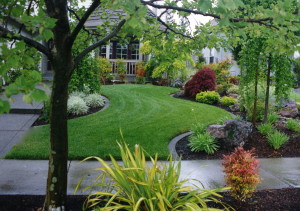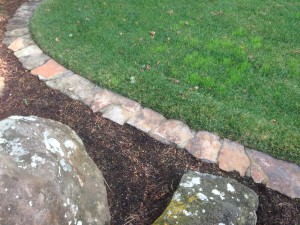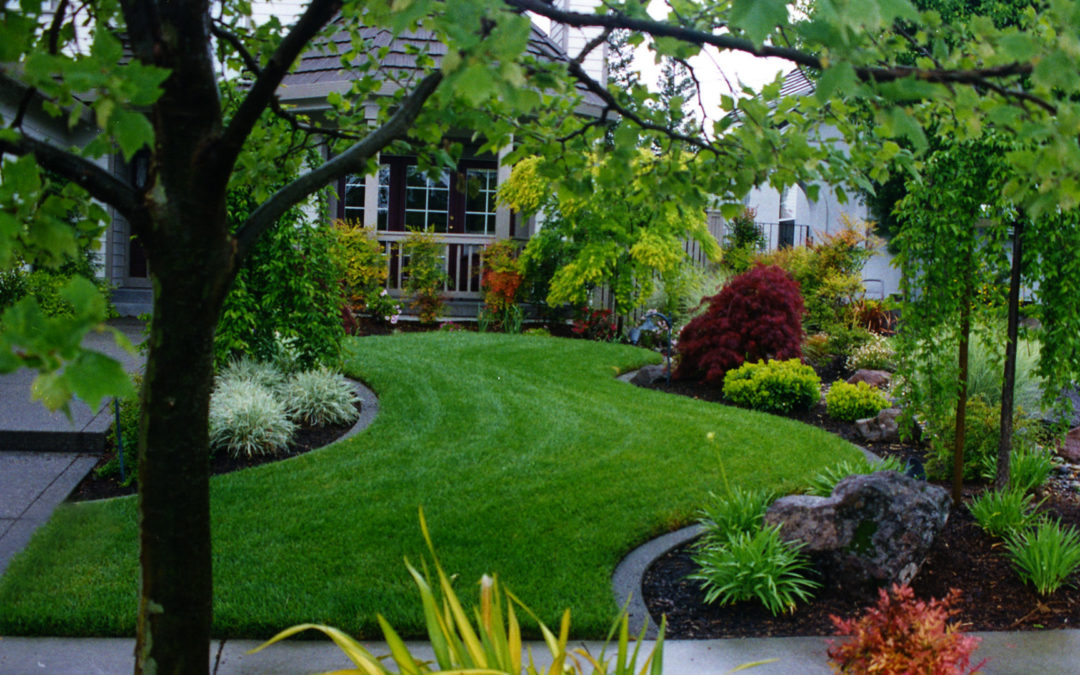One of the hallmarks of a garden designed and built by Details Landscape Art is neatness. All lawns are bordered by lawn mowstrips or edging, and all decomposed granite, gravel or rock areas have some sort of edging, to prevent the material from spreading out beyond the desired areas.
We install beautiful gardens in Petaluma, Santa Rosa, Windsor, Healdsburg, Sonoma, Kenwood, Sebastopol, Cotati and Penngrove in Sonoma County. We also work in Marin and Napa Counties. Some installations include lawns, despite the drought and concerns about water use. We believe it is unsightly to see lawns without a border, where the grass gradually creeps out into the bark or groundcover. So we always install mowstrips or edging.
Materials available range from 2×4 synthetic benderboard on edge (vertical), to 1/8- inch thick steel headers, to six-inch wide concrete mowstrips.
The benderboard is an inexpensive product that does the trick, containing the grass, and barely allowing enough room for the wheel of a lawnmower to ride on it. We dig a narrow trench about four inches deep and place the bend- erboard so that the top of the benderboard is level with the BOTTOM of the blades of grass, so that the grass sticks up like a brush. If there is more than one twenty foot benderboard, other pieces are connected to each other by means of pre-made notches that are fit together and attached by screws. Twelve inch stakes are then driven into the ground so that the top of the stake is about midway on the benderboard, so that the stakes do not show. The benderboard is then attached to the stakes with screws.
Steel headers, much thinner, are somewhat more expensive, contain the grass, but do not allow room for the lawnmower wheel, making mowing more difficult. They are installed in a similar fashion as the bendaboard, except that flat steel stakes are inserted into pre-made slots in the steel headers, and then driven into the ground.
The six-inch concrete mowstrip is quite a bit more expensive, and can be constructed of either exposed aggregate, brick, stamped concrete or flagstone. It can be a beautiful as well as functional element and allows generous space for a lawnmower wheel to pass over.
For a flagstone mowstrip we dig a much wider and deeper trench, usually eight inches wide for a six inch wide mowstrip .(to allow room for concrete forms), and about seven inches deep to allow for three and one half inches of concrete, and then the mortar and stone on top. Of course stamped concrete only requires the three and one half inches of the concrete.

Gravel or decomposed granite areas, can be edged with either benderboard or steel headers, and since a lawnmower is not involved, the width of the edging is not an issue. All that is needed is a way to contain the material so it remains in place.
Although we create natural looking gardens, with rock, wood, interesting plants and bark, neatness matters and our finished gardens are meticulous while retaining a natural feel. Lawn mowstrips or edging help keep lawns neat.

